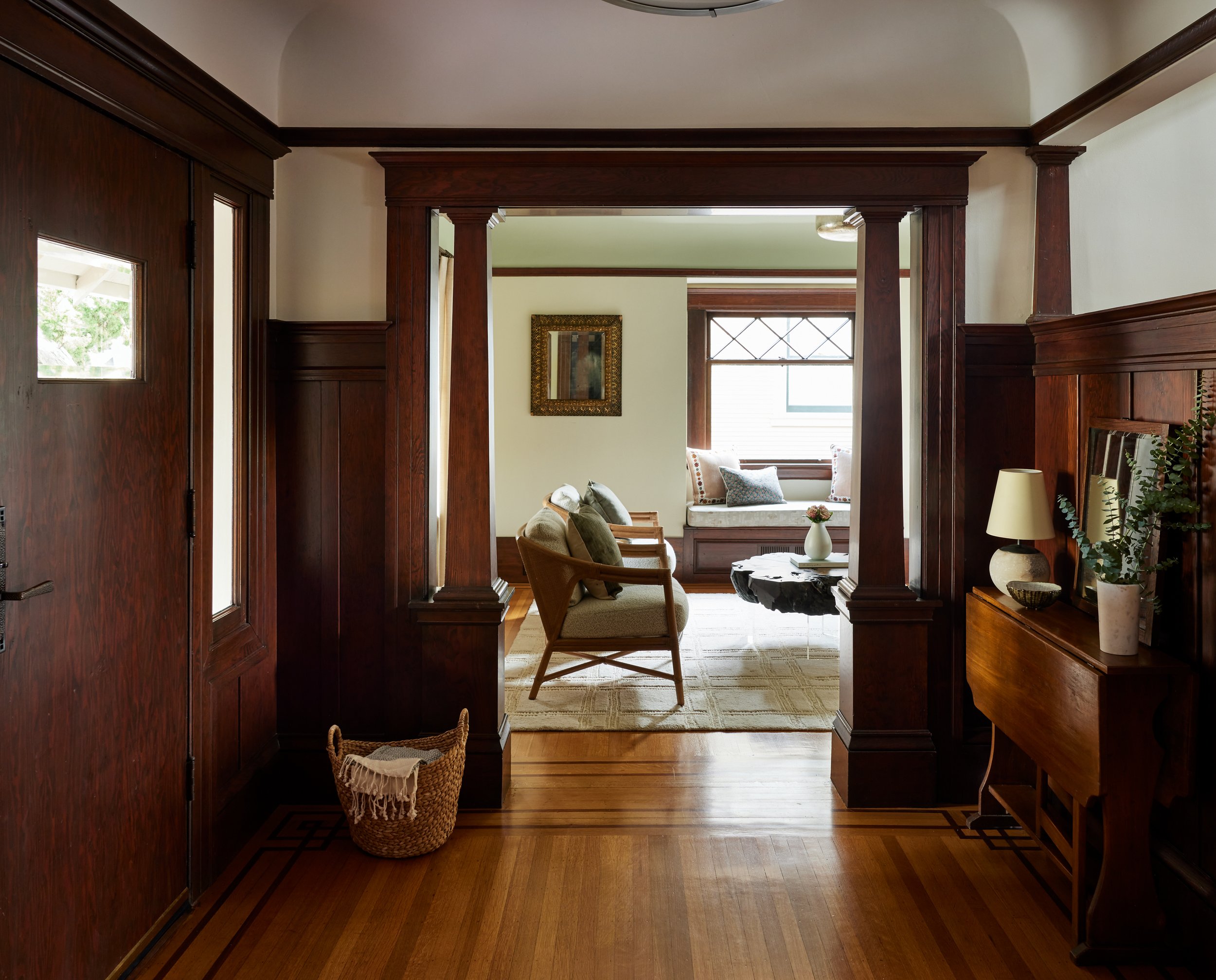
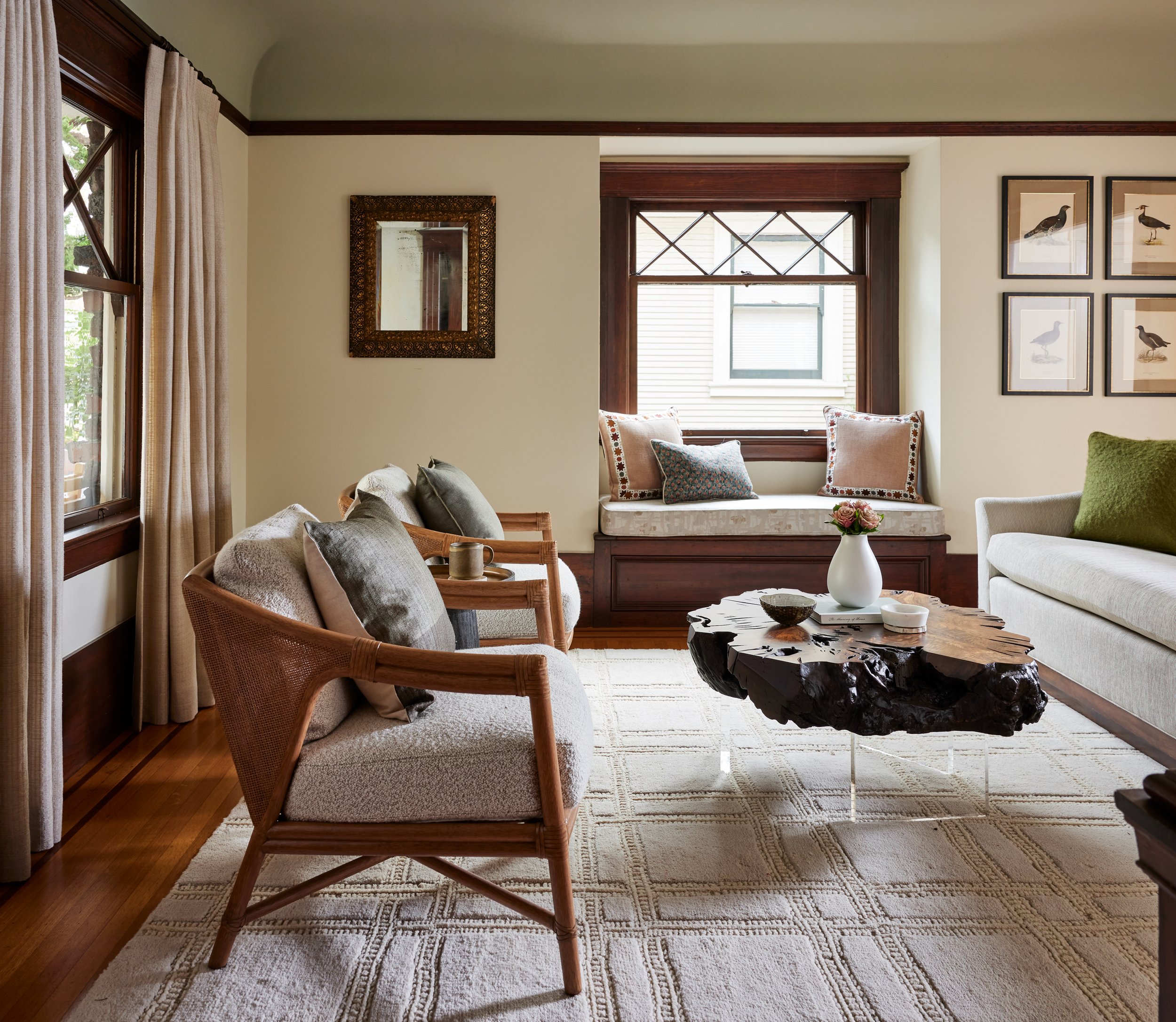

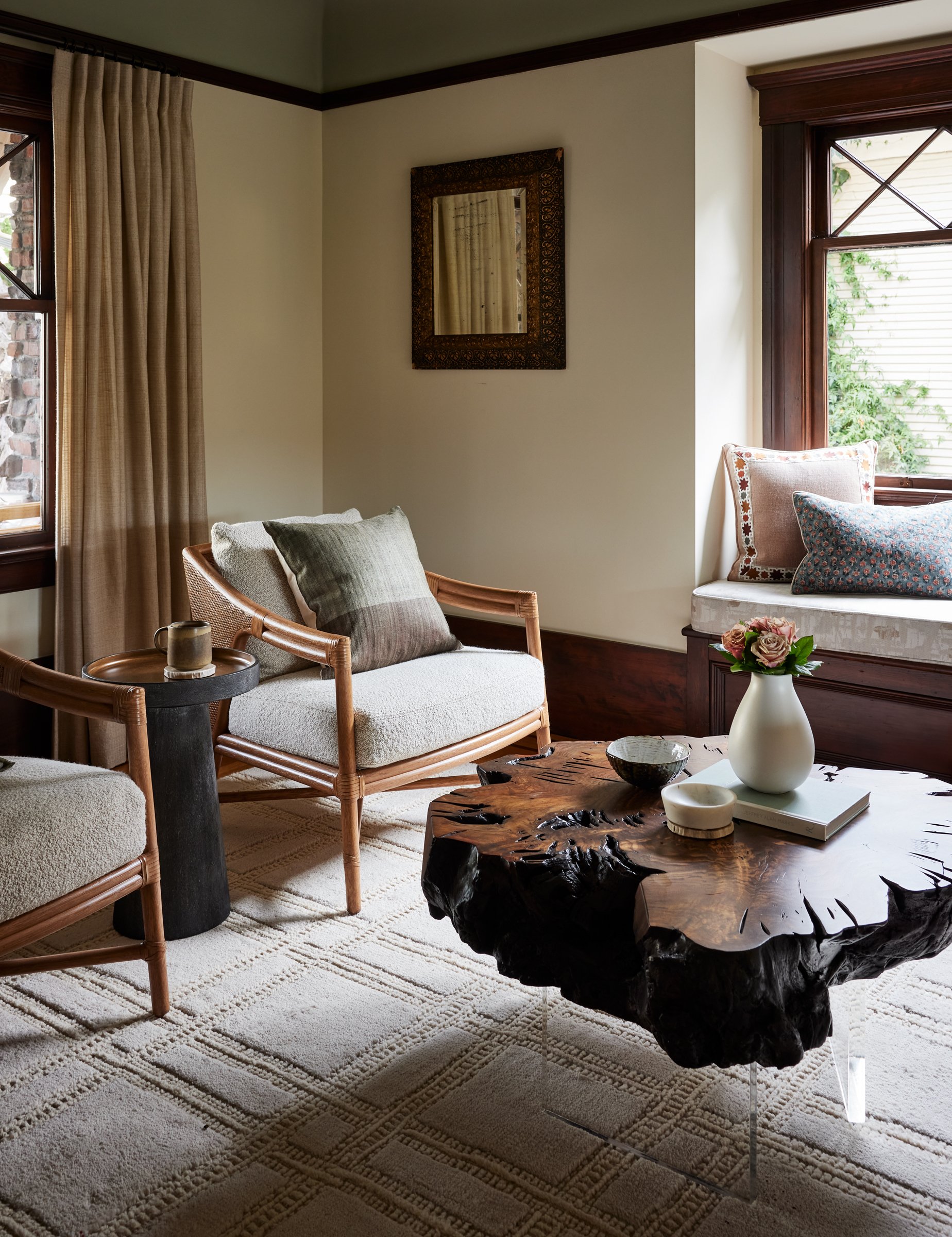
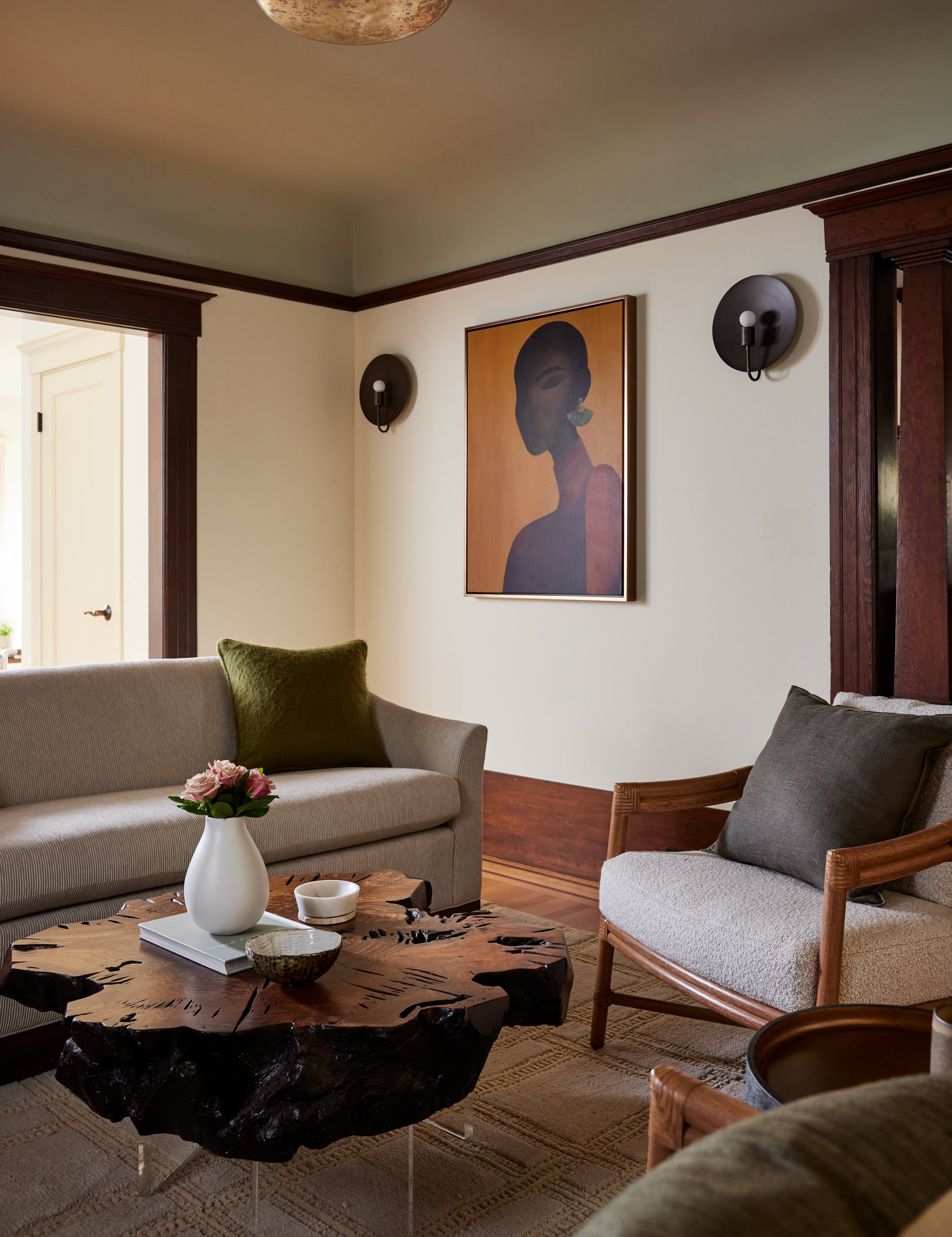
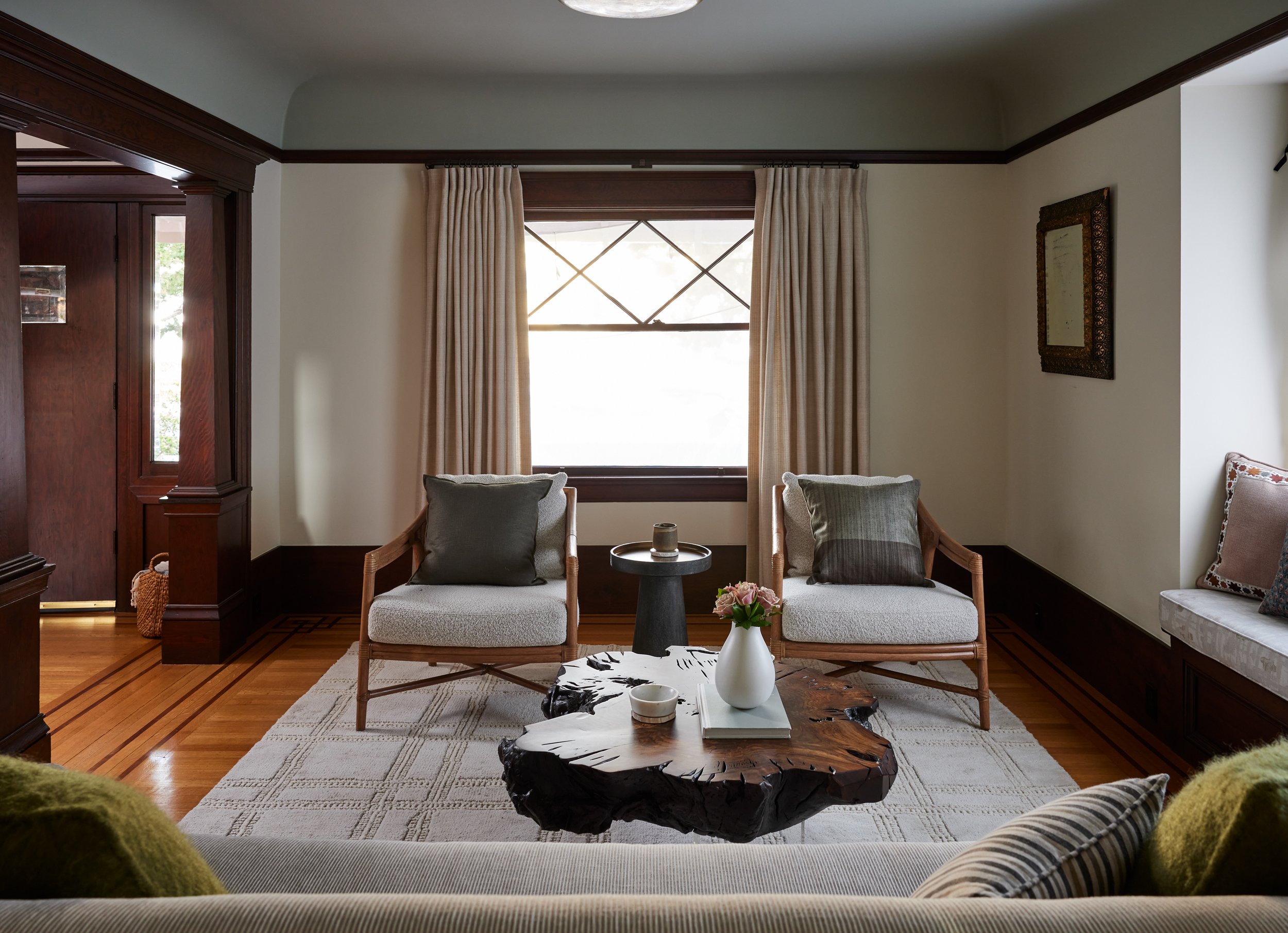
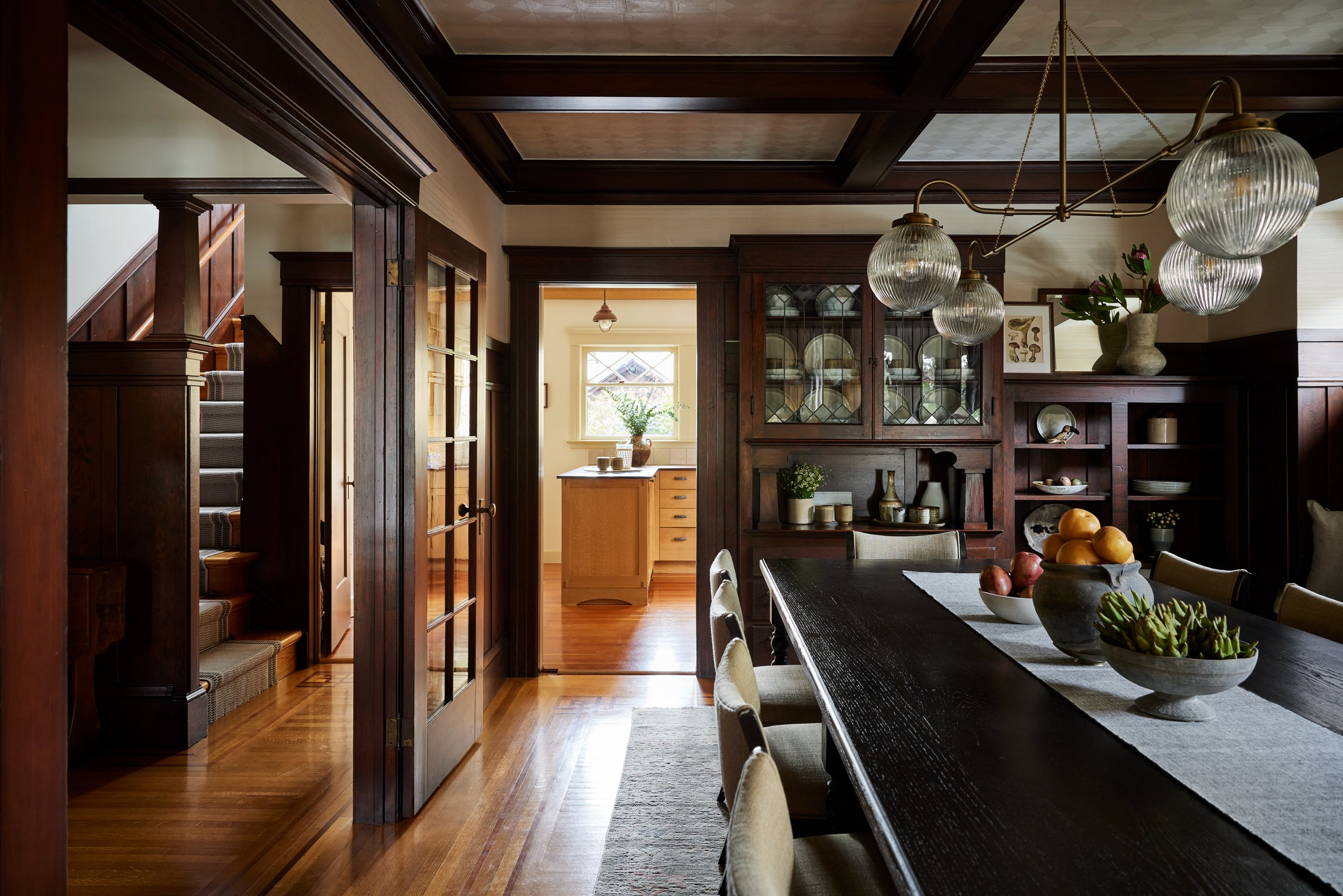
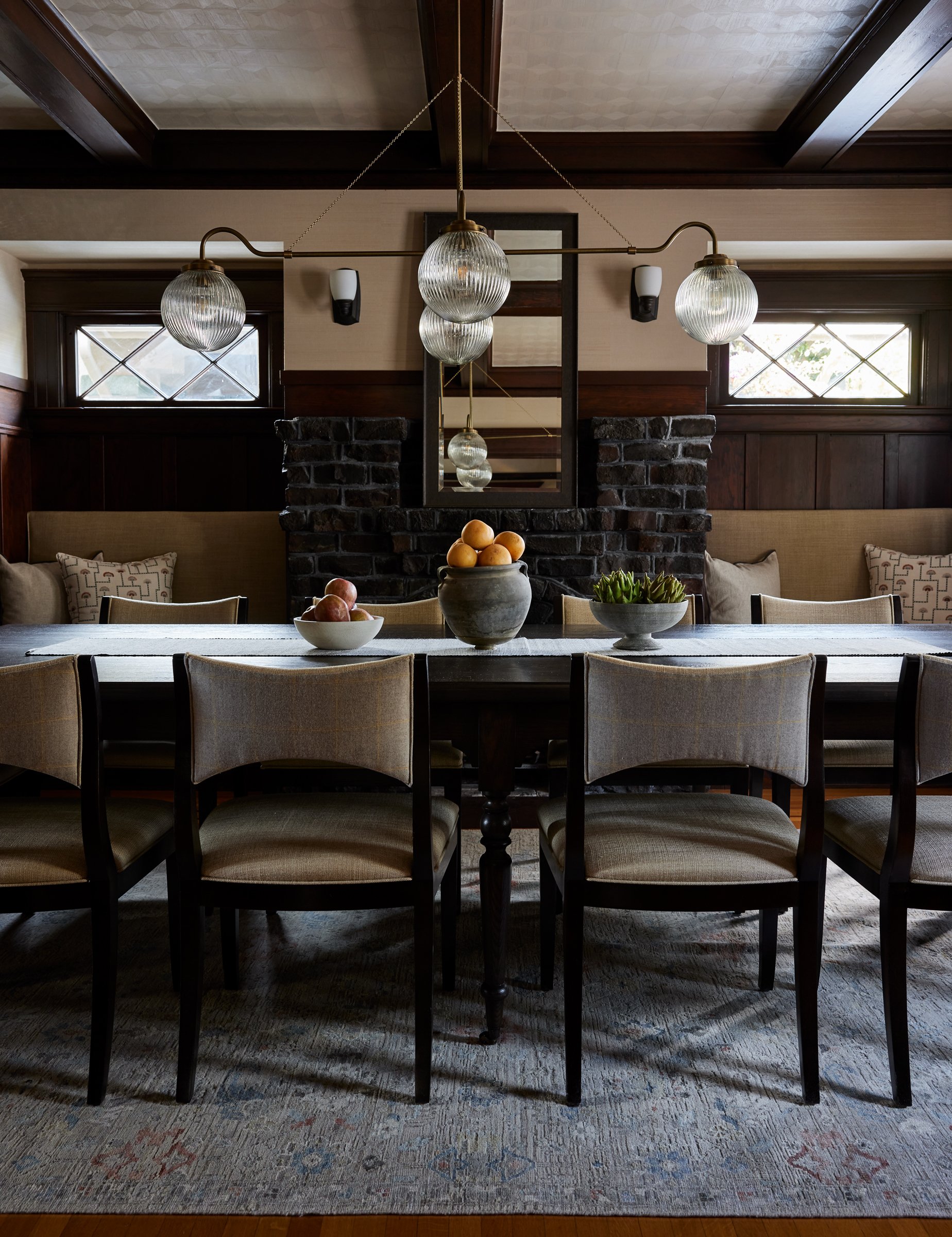
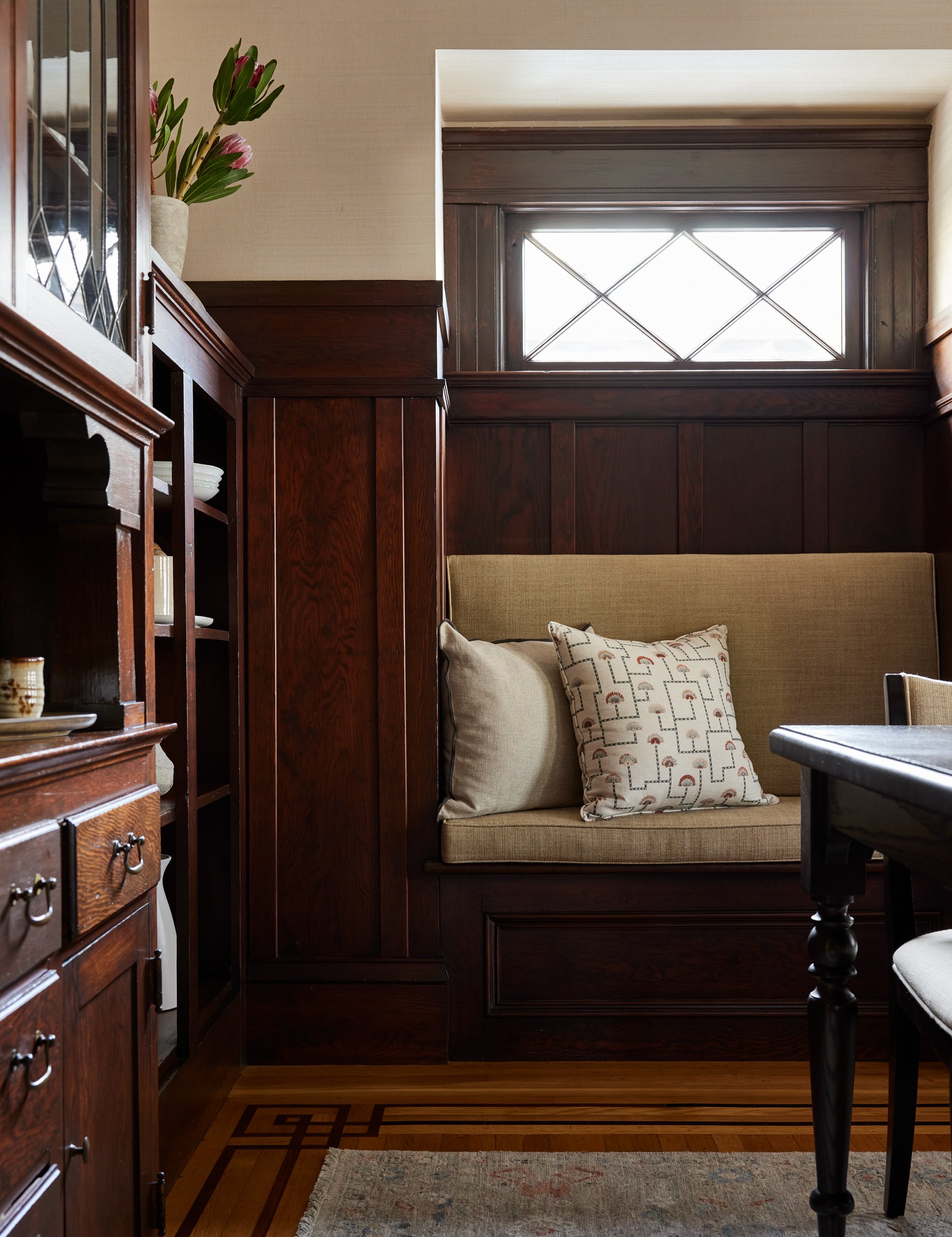
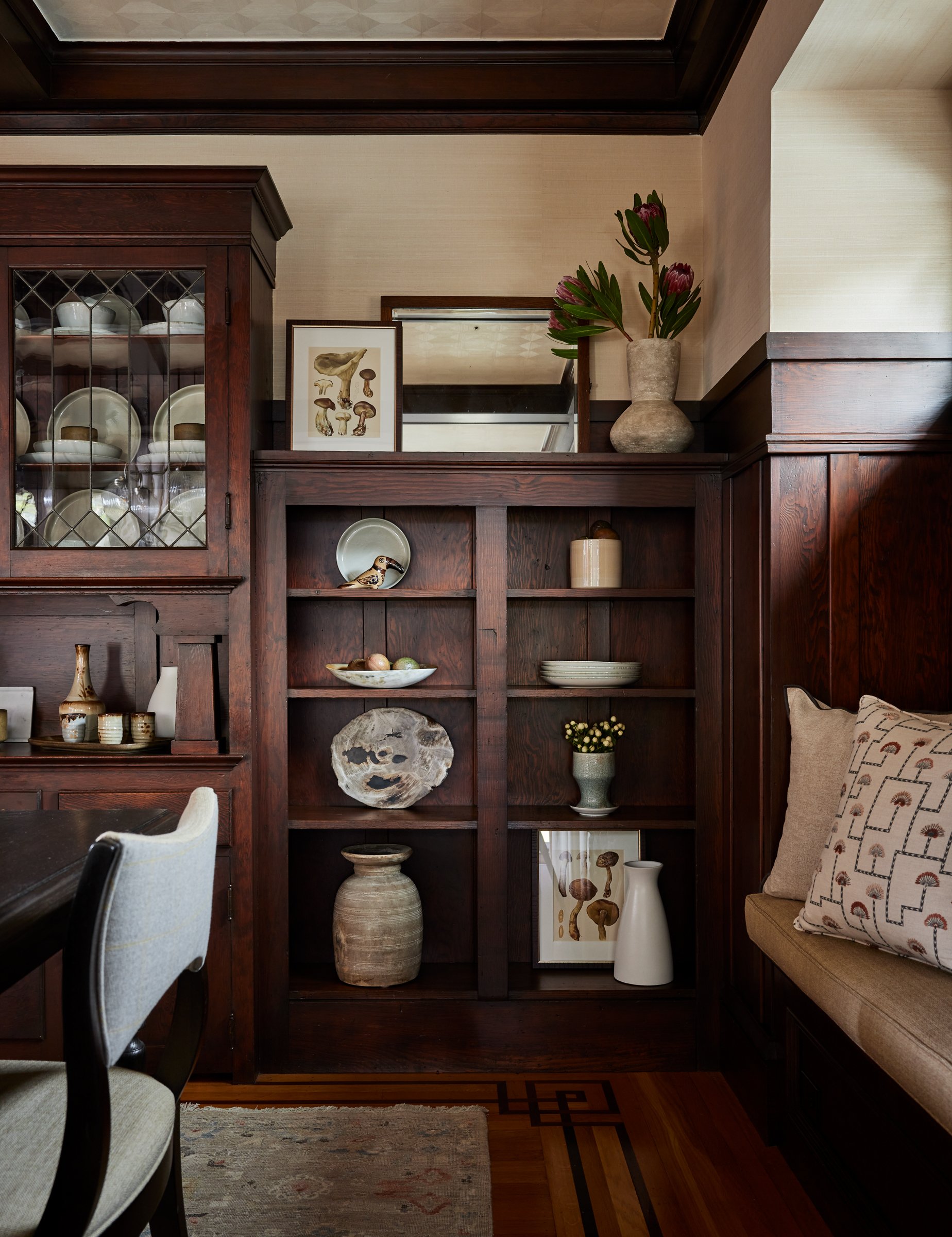
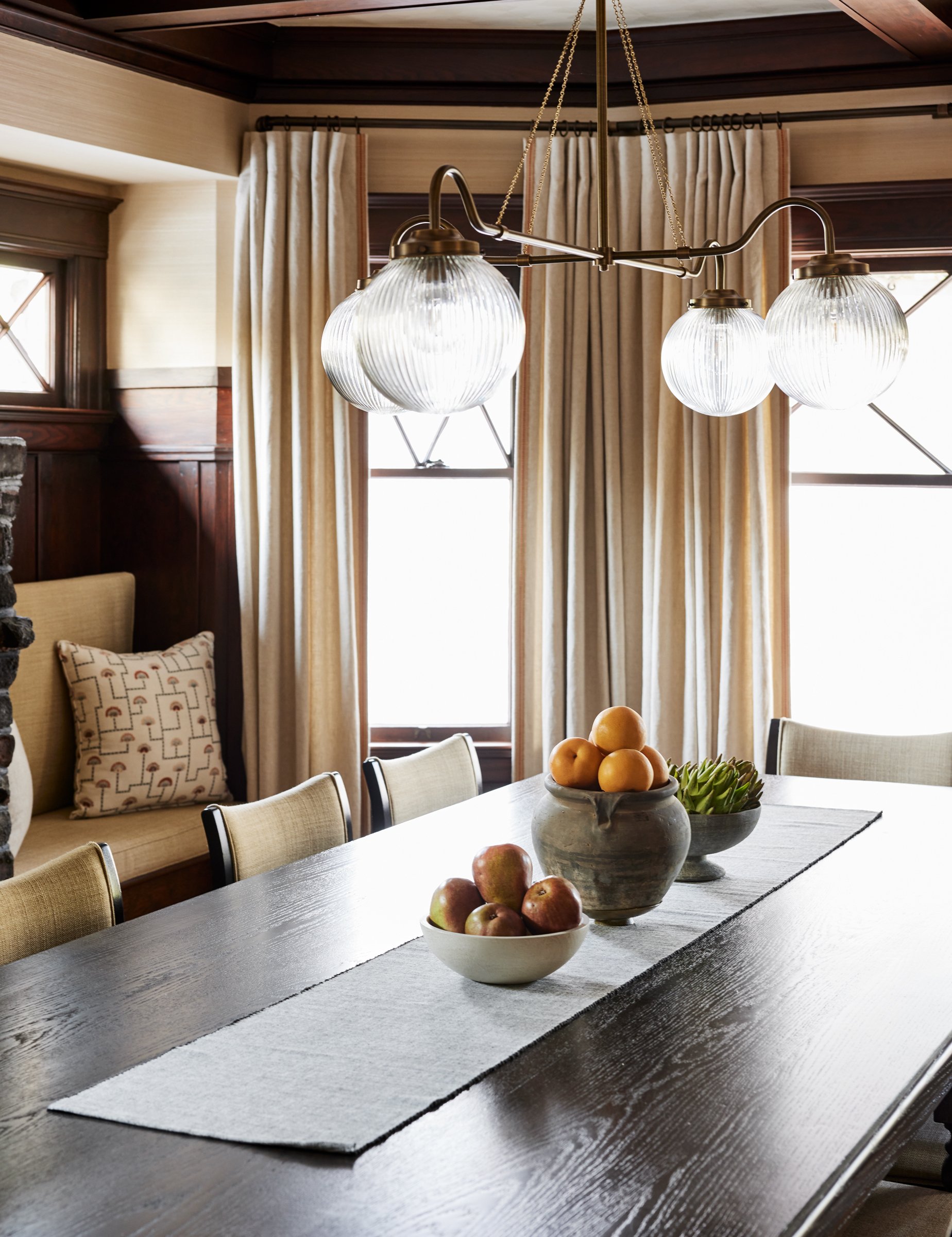
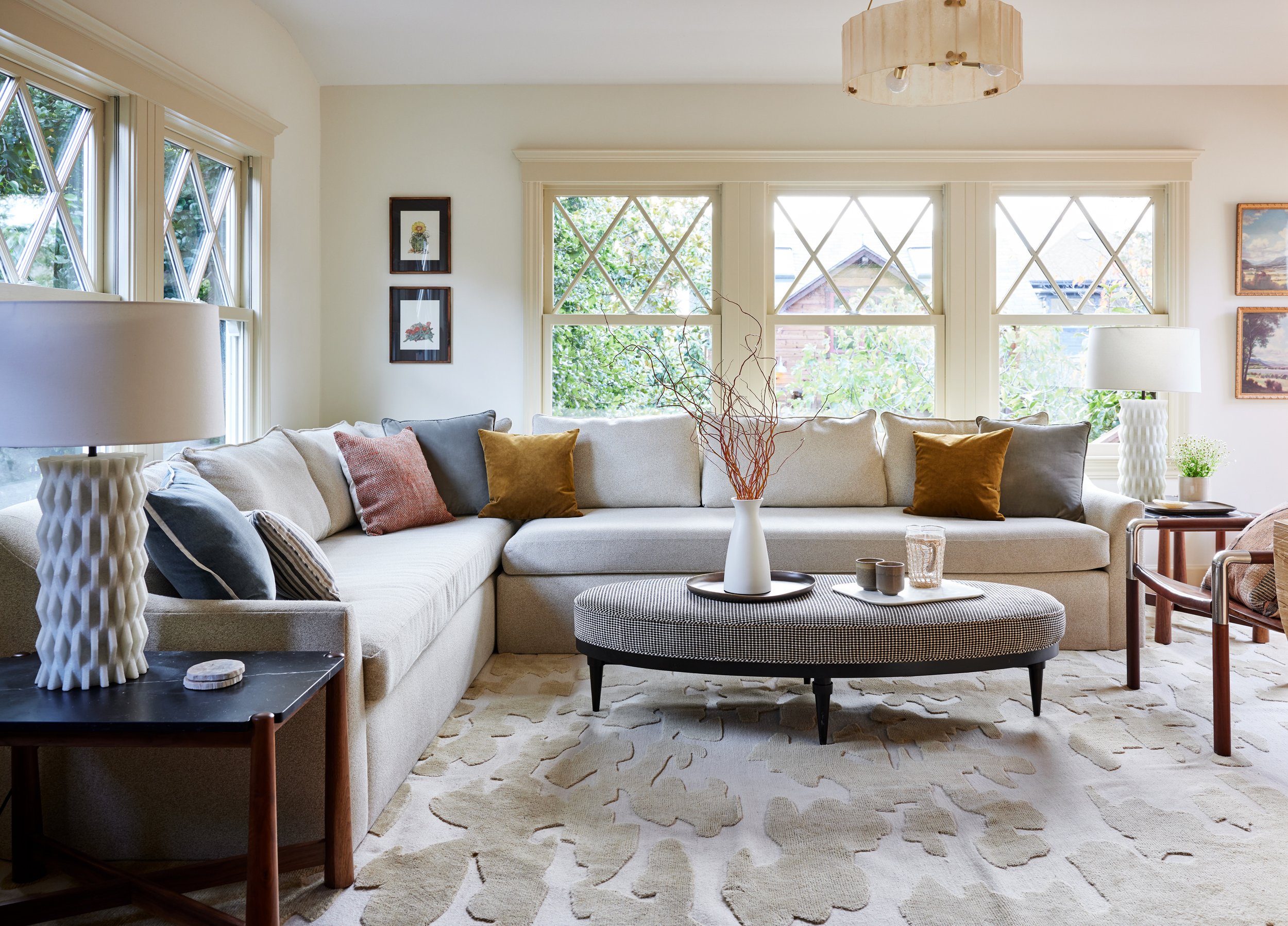
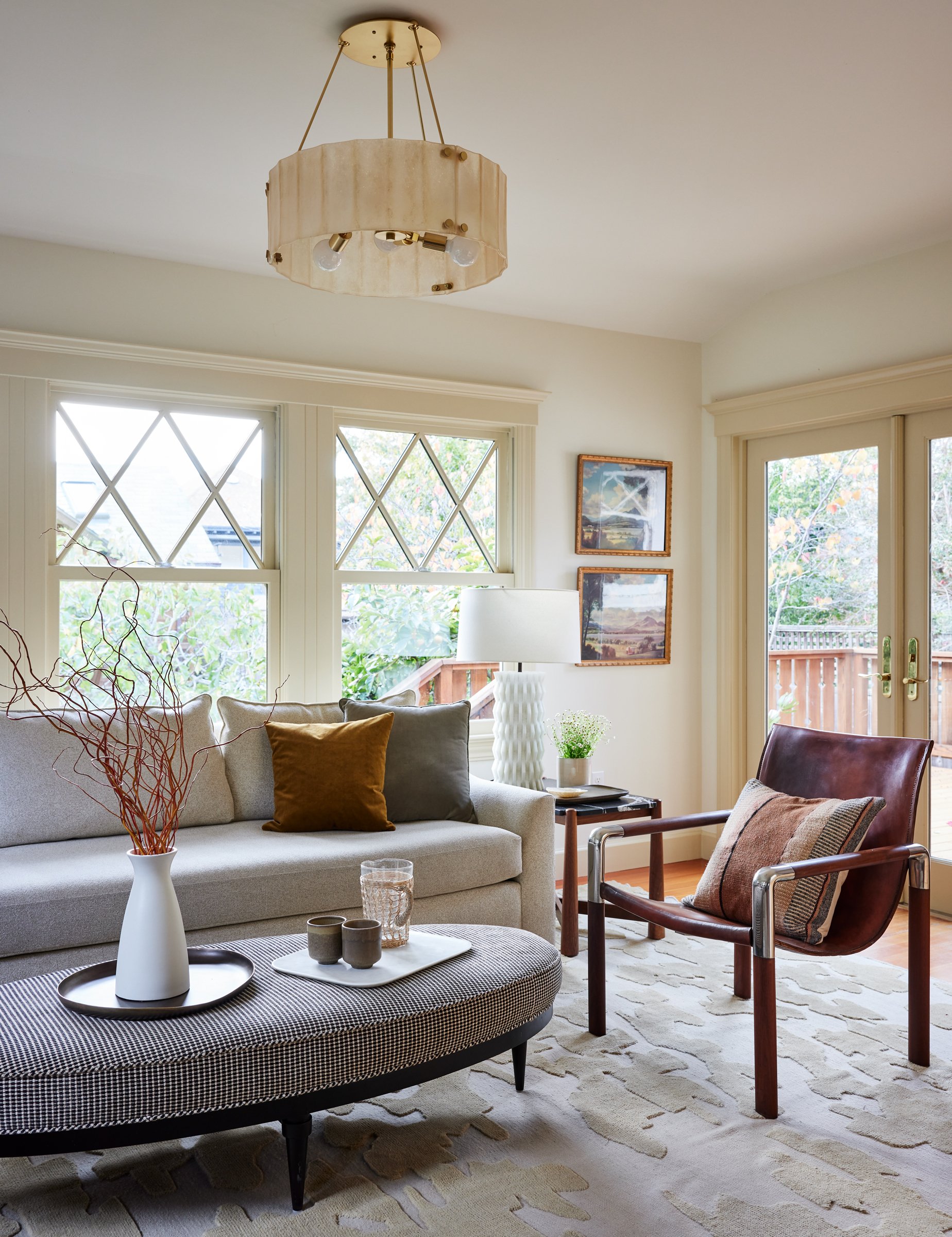
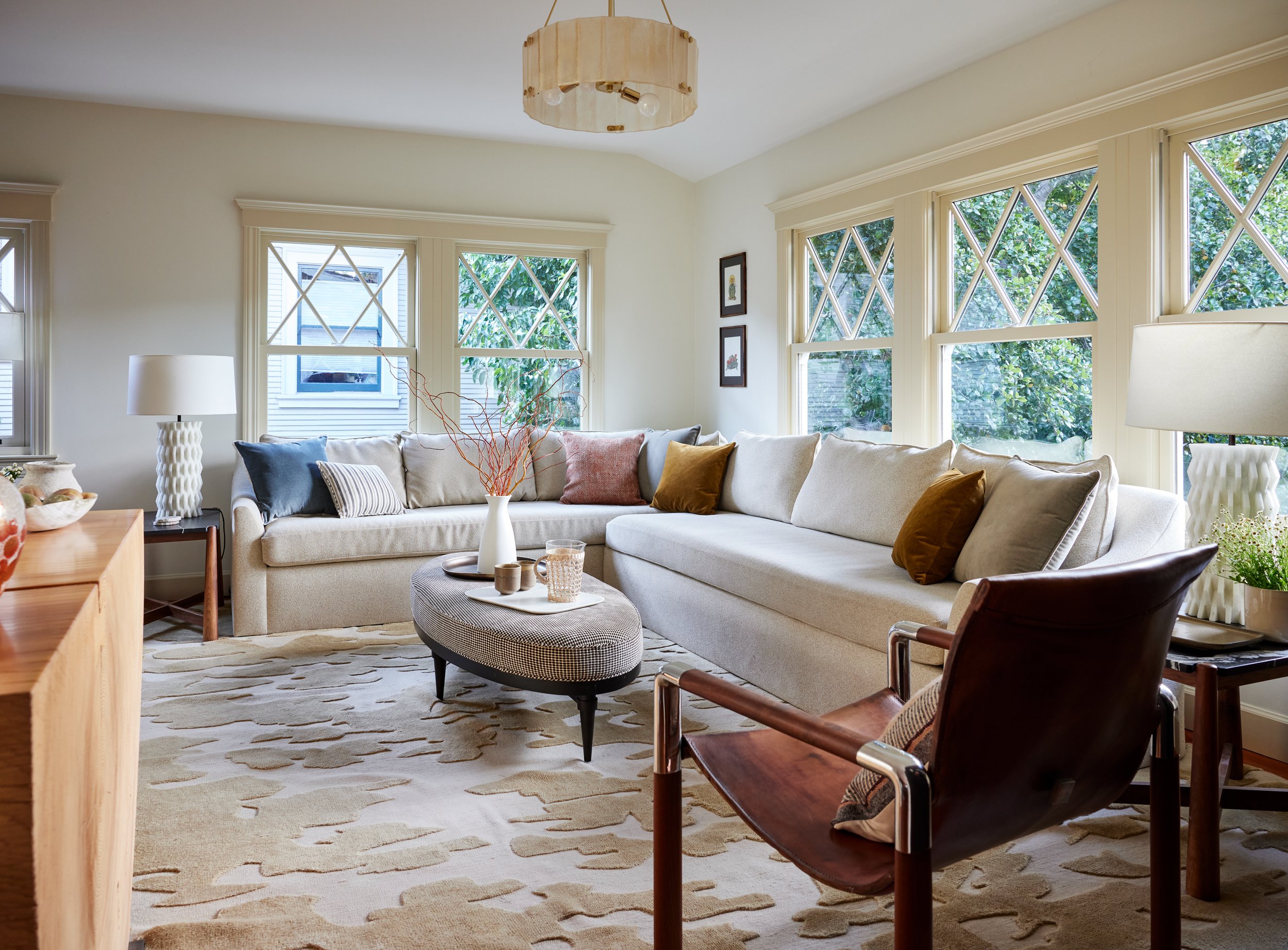
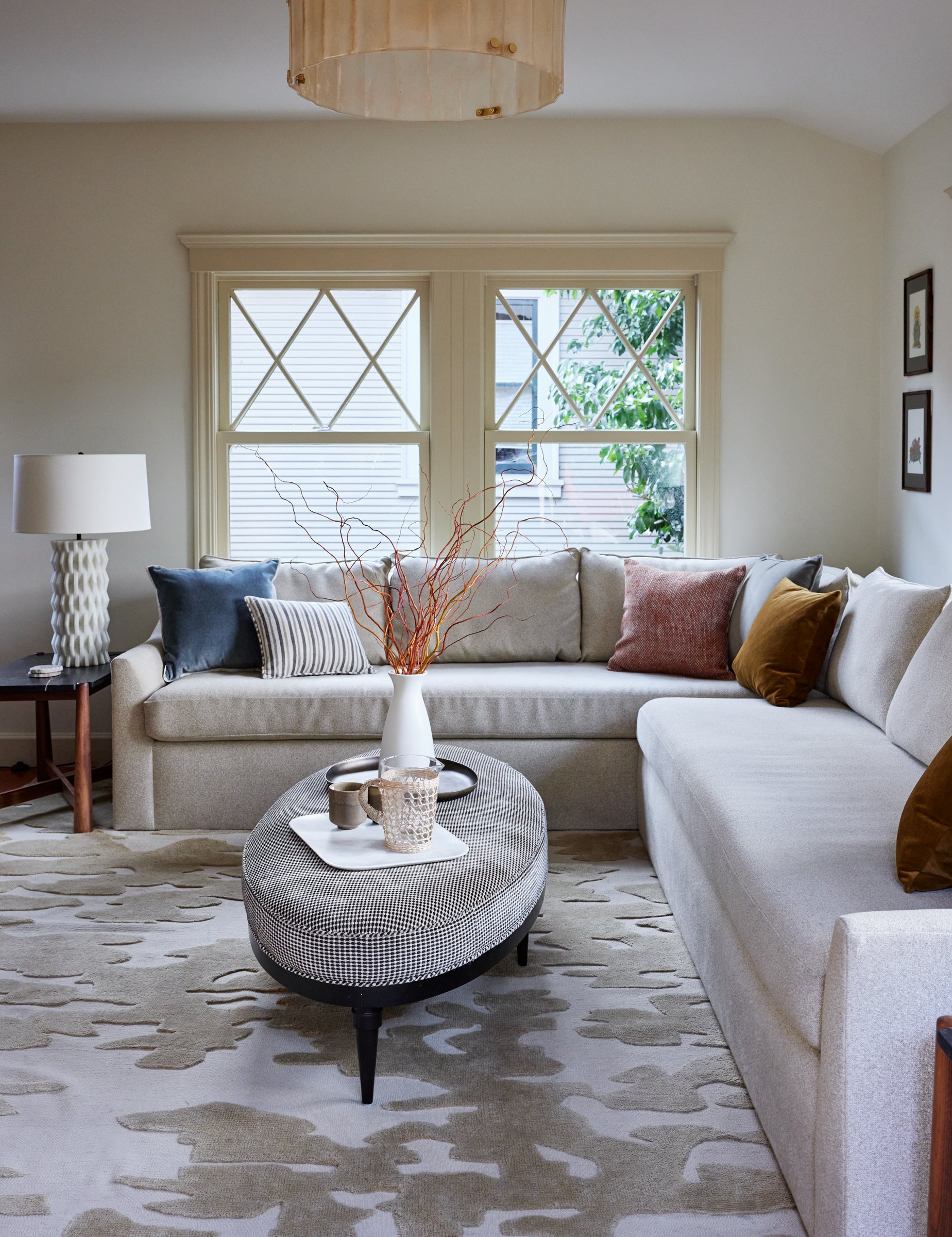
Historic Oakland Refresh:A Craftsman Revival
Photography by John Merkl
Nestled in Oakland's historic district, this transformative project demonstrates the delicate balance between preserving heritage and introducing modern livability into a classic Craftsman home. Tasked with brightening and updating the residence while honoring its original character, Lane McNab Interiors embraced the home's distinctive features—including its clinker brick hearth, preserved wood paneling, and period details—as the foundation for a thoughtful renovation that bridges past and present.
Central to this project's success is its innovative approach to lighting and texture. The design introduces a sophisticated layering of materials, beginning with a meticulous wood restoration that revitalized the original dark millwork without compromising its historic integrity. A transformative element comes from the subtle introduction of a blonde wood-veneer patterned wallpaper between the paneling and ceiling, creating a luminous interplay that brightens the interior yet respects its inherent structure. The dining room showcases this harmonious blend, where a dramatic contemporary light fixture hovers above the table, its transitional design nodding to both period aesthetics and modern sensibilities.
The renewed home exemplifies a successful balance between comfort and preservation, reflecting the client's desire for an environment that honors its Craftsman heritage yet functions for contemporary living. Custom touches, such as removable upholstered cushions beside the hearth, add softness to the substantial materials while maintaining authenticity. The thoughtful placement of mirrors, including a striking tall mirror above the original brickwork, amplifies natural light and creates visual expansion. The crowning touch comes from the atmospheric ceiling treatment—a foggy blue gray that extends from the front porch into the living room, establishing a subtle connection between outdoor and indoor areas that recalls the Berkeley sky. This project demonstrates how historic residences can evolve and brighten without sacrificing their essential character and legacy.